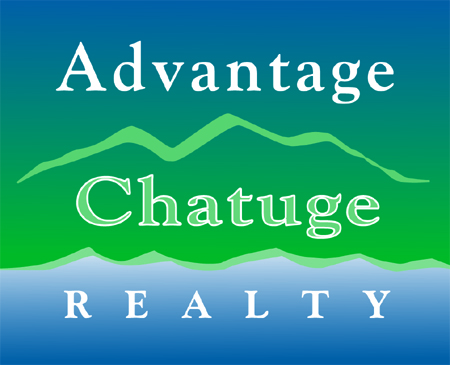.blog-post h2 {
font-size: 24px;
font-weight: bold;
color: #333;
margin: 30px 0 15px;
}
.blog-post h3 {
font-size: 20px;
font-weight: bold;
color: #333;
margin: 20px 0 10px;
}
.blog-post p {
font-size: 16px;
line-height: 1.6;
margin-bottom: 15px;
}
.blog-post ul {
list-style-type: disc;
padding-left: 20px;
margin-bottom: 15px;
}
.blog-post ul li {
margin-bottom: 10px;
font-size: 16px;
}
.blog-post a {
color: #0066cc;
text-decoration: none;
}
.blog-post a:hover {
text-decoration: underline;
}
font-size: 24px;
font-weight: bold;
color: #333;
margin: 30px 0 15px;
}
.blog-post h3 {
font-size: 20px;
font-weight: bold;
color: #333;
margin: 20px 0 10px;
}
.blog-post p {
font-size: 16px;
line-height: 1.6;
margin-bottom: 15px;
}
.blog-post ul {
list-style-type: disc;
padding-left: 20px;
margin-bottom: 15px;
}
.blog-post ul li {
margin-bottom: 10px;
font-size: 16px;
}
.blog-post a {
color: #0066cc;
text-decoration: none;
}
.blog-post a:hover {
text-decoration: underline;
}
Navigating Slope Challenges
Building a mountain home in regions like western North Carolina or North Georgia is a dream for many mountain property homeowners. However, slope stable mountain home construction on the steep slopes that define these landscapes—often exceeding 30% grade—present unique challenges. From erosion risks to foundation stability, careful planning is essential to ensure your cabin or home is safe, sustainable, and cost-effective. This guide explores how slope affects your mountain home construction and offers practical solutions to stabilize your building site, drawing on modern techniques and local regulations.Understanding Slope Challenges
Why Slope Stability Matters
Over 75% of land in western North Carolina and North Georgia has slopes steeper than 30%, complicating site preparation and access. Steep terrain increases the risk of landslides, soil erosion, and poor septic system performance. Making a stable mountain home takes planning. Shallow bedrock and slide-prone soils further raise the financial and environmental costs of building. At higher elevations, heavy snowfall and slow snowmelt can also make winter access difficult, impacting both construction and long-term livability.Key Risks to Address
- Landslide and Erosion: Unstable slopes can shift, damaging foundations or roads, requiring geotechnical expertise to mitigate risks.
- Septic System Limitations: Conventional septic systems struggle on slopes over 30%, often requiring alternative solutions like mound systems or aerobic treatment units. Mound systems elevate drain fields to manage wastewater, while aerobic units use oxygen to enhance treatment, both needing local health department permits that can add $1,000–$5,000 in costs and weeks to the planning process.
- Access Challenges: Steep sites may need specialized driveways or snow removal plans, especially in remote areas like Hiawassee, GA or Hayesville NC
Designing for a Slope-Stable Mountain Home
Home Designs for Steep Terrain
- Multi-Level Homes: These follow the slope, minimizing the need for extensive grading. Each level can be staggered to align with the terrain, preserving natural beauty.
- Piling Foundations: Elevating the home on pilings preserves the landscape and reduces leveling requirements, ideal for steep lots.
- Stepped or Pier Foundations: These distribute weight evenly on uneven ground, suitable for slopes between 1:5 and 1:10 ratios.
Site Selection Tips
- Assess Sun Exposure: Optimize natural light and warmth, especially in winter, to reduce heating costs.
- Check Accessibility: Ensure construction crews, future residents, and fire and emergency vehicles can reach the site year-round, accounting for steep driveways or snow accumulation. Consult local fire departments to verify access routes meet safety standards.
- Verify Utility Access: Confirm availability of water, electricity, and sewer, or plan for off-grid solutions like wells or advanced septic systems.
Stabilizing Your Building Site
Cut and Fill Techniques
- Keep cut and fill slopes under 30% (30 vertical feet per 100 horizontal feet) to reduce erosion risks.
- Stabilize banks with retaining walls, geotextiles, or vegetation to prevent slippage.
- Hire experienced contractors familiar with mountain terrain to execute grading properly, as improper cuts can destabilize the entire site.
Erosion Control Measures
Erosion is a major concern on exposed slopes. The North Carolina Sedimentation Pollution Control Act requires that graded slopes be stabilized with vegetation or erosion-control devices within 15 working days or 30 calendar days of grading completion, whichever is shorter. Key strategies include:- Native Vegetation: Plant native grasses, shrubs, or trees like mountain laurel or red maple to anchor soil, reduce maintenance costs, and enhance local ecosystems. Native plants can save thousands in landscaping over time while supporting pollinators and wildlife.
- Retaining Walls: These hold soil in place on steep slopes, especially in uphill or downhill scenarios, and can be aesthetically integrated into landscaping and add to slope stability.
- Efficient Drainage: Install French drains or swales to manage surface water runoff and prevent sedimentation in nearby streams.
Legal Responsibilities
Under North Carolina law, the person financially responsible for land clearing—typically the homeowner—is liable for complying with erosion control regulations, even for developments under one acre. For detailed guidance, visit the North Carolina Department of Environmental Quality’s Division of Energy, Mineral, and Land Resources. In Georgia, Soil and Water Conservation Districts can guide you through similar regulations to ensure compliance.Modern Techniques for Enhanced Stability
- Base Plate Foundations: These provide superior resistance to erosion-induced settlement compared to strip foundations, ideal for torrent-prone areas.
- Waterproofing Basements: Use sealed concrete and backflow flaps in sewage systems to prevent flooding from runoff or overloaded drainage, protecting your investment.
- Fire and Weather Resilience: Incorporate fire-resistant materials like fiber-cement siding and metal roofing, and use energy-efficient windows and overhangs to combat harsh weather. Given the growing wildfire threat in North Georgia and western North Carolina, create a defensible space by clearing flammable vegetation within 30–100 feet of your home, and consult local fire departments to ensure rapid emergency response.
Next Steps for Mountain Property Homeowners
Building a stable mountain home requires careful site selection, thoughtful design, and proactive stabilization measures. Start by commissioning a geotechnical survey and contacting your local SWCD (listed below) for tailored erosion control and conservation advice. Work with local experts to ensure compliance with regulations and optimize your site’s stability. Explore available properties to find the perfect lot for your dream home at North Carolina mountain Property listings. By prioritizing slope stability, erosion control, and compliance, you can create a safe, sustainable retreat that enhances your mountain property’s value and beauty. For personalized guidance on building a stable mountain home in regions like Hiawassee, GA or Hayesville ,NC contact local architects or builders familiar with mountain terrain. Your dream mountain cabin is within reach with the right planning and expertise.Local Soil and Water Conservation Resources
Your local Soil and Water Conservation District (SWCD) is an invaluable partner for mountain property homeowners, offering technical assistance, site evaluations, and cost-share programs for erosion control and conservation practices. Contact your county’s SWCD:- Cherokee County, NC:
- District: Cherokee County SWCD
- Address: 40 Church St, Murphy, NC 28906
- Phone: (828) 837-6417
- Email: cherokeeswcd@cherokeecounty-nc.gov
- Clay County, NC:
- District: Clay County SWCD
- Address: 25 Riverside Circle, Suite 3, Hayesville, NC 28904
- Phone: (828) 389-9764
- Email: lstaton@claync.us
- Rabun, Fannin, Towns & Union County, GA:
- District: Blue Ridge Mountain SWCD
- Address: 138 Bushy Head Rd, Blairsville, GA 30512
- Phone: (706) 946-6032
- Website: https://www.gacd.us/blueridgemountain
- Gilmer County, GA:
- District: Limestone Valley SWCD
- Address: 1550-A Mosaic Way, Dalton, GA 30720
- Phone: (706) 636-2535
- Website: https://www.limestonevalley.org




